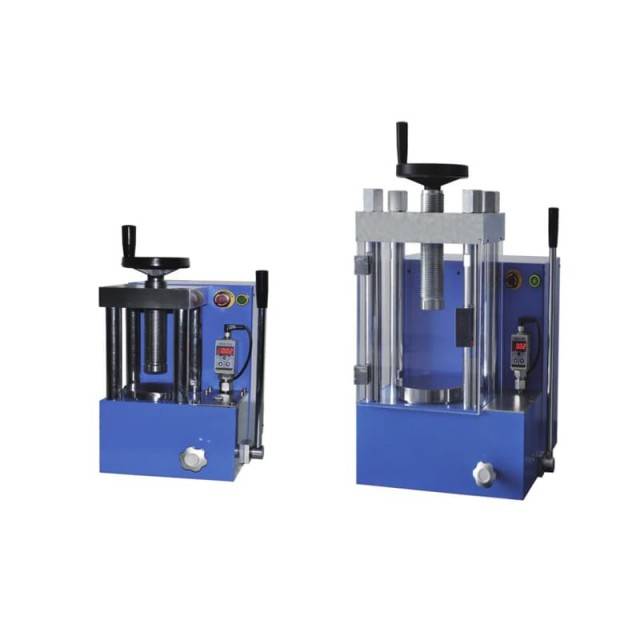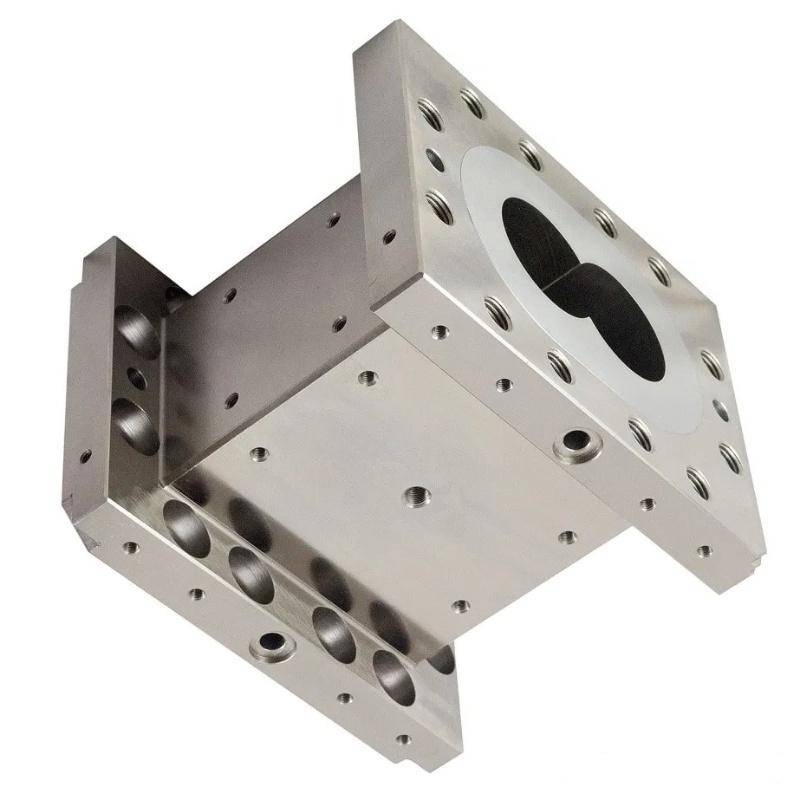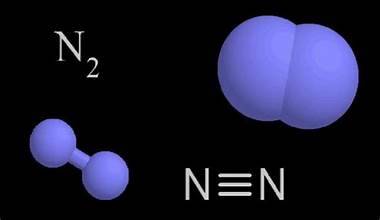Introduction to Isostatic Pressing
Isostatic pressing is a manufacturing process that involves the application of high pressure to a material in a sealed chamber. This process is used in various industries to create high-performance components with complex shapes and precise dimensions. The two main types of isostatic pressing are hot isostatic pressing (HIP) and cold isostatic pressing (CIP). In CIP, the material is compressed at room temperature, while HIP involves heating the material to high temperatures before applying pressure. Isostatic pressing can be used with a wide range of materials, including metals, ceramics, and composites. The advantages of this process include improved strength, density, and dimensional accuracy.
Table of Contents
Hot and Cold Isostatic Pressing
Isostatic pressing is a manufacturing process that involves applying uniform pressure to a material from all directions. The process is used to create parts and components with high precision and uniform density, which are used in a variety of industries including aerospace, medical, and semiconductor. The two main types of isostatic pressing are hot isostatic pressing (HIP) and cold isostatic pressing (CIP).
Cold Isostatic Pressing
Cold isostatic pressing uses room temperature to apply pressure to the material, resulting in a more uniform density and improved mechanical properties. The material is subjected to uniform pressure from all directions, allowing it to maintain its shape and size while being compacted. The process is used for temperature-sensitive materials such as ceramics, metal powders, and other materials that cannot be formed at room temperature.
Hot Isostatic Pressing
Hot isostatic pressing, on the other hand, uses high temperatures and pressure to remove any porosity or defects, resulting in a denser and stronger material. The material is subjected to uniform pressure and elevated temperatures to achieve solid-state diffusion, which eliminates any residual porosity from a sintered PM part. HIP is suitable for materials with high-temperature requirements, such as metals and alloys, and is widely used in industries that demand high precision, such as aerospace and medical equipment manufacturing.
The Main Differences between HIP and CIP
The main difference between HIP and CIP is their temperature range. Cold isostatic presses are generally used in room temperature environments and are suitable for temperature-sensitive materials such as ceramics, metal powders, etc. On the other hand, hot isostatic presses work at high temperatures, suitable for materials with high-temperature requirements, such as metals, alloys, etc.
Conclusion
Isostatic pressing is a complex process that requires careful control and monitoring to ensure the desired properties of the material are achieved. Hot and cold isostatic pressing are two main types of isostatic pressing processes that have different temperature range and are used to manufacture different materials. Cold isostatic pressing is suitable for temperature-sensitive materials such as ceramics and metal powders, while hot isostatic pressing is suitable for high-temperature materials such as metals and alloys.

Isostatic Forming Technology
Isostatic pressing is a widely used technology in the manufacturing of precision components and materials. It involves the application of high pressure from all directions uniformly. The process is also called isostatic forming and is popular in the aerospace, automotive, and medical industries. The technique ensures that the material is densely packed, evenly distributed, and has uniform mechanical properties.
How Isostatic Forming Works
Isostatic forming technology is to place the powder specimen to be pressed in a high-pressure container, using the incompressible nature of the liquid or gas medium and the nature of uniform transfer of pressure from all directions to uniformly pressurize the specimen. When the liquid medium goes through the pressure pump into the pressure vessel, according to the principle of fluid mechanics, the size of the pressure is constant and uniformly transferred to all directions. At this time, the powder in the high-pressure container is uniformly pressurized and of the same size in all directions.
Isostatic Pressing Techniques
Isostatic pressing can be done using either hot or cold techniques, and the choice of method depends on the type of material being processed. Hot isostatic pressing (HIP) is a process technology that uses high temperature and high pressure to subject metal or ceramic products to equal pressure in all directions so that the parts can be sintered and densified. On the other hand, cold isostatic forming, also known as hydrostatic forming, is the use of liquid media incompressible and uniform transfer of pressure, a forming method. The method can apply pressure in all directions of the bad body at the same time, so the pressed blank has good uniformity.
Benefits of Isostatic Forming
Isostatic forming is a special way of press forming that uses the principle of liquid pressure transfer to pressurize the billet from all directions to improve the density of the billet. This makes the density of the billet increase and can effectively reduce sintering shrinkage, reduce or even eliminate the problem of sintering cracking and deformation, and also effectively improve the density of the finished sintered product. The density of the billet and the density of the finished product are positively correlated. The density of the finished product is the basis of its good mechanical properties.
Applications of Isostatic Forming
Isostatic forming has become an essential part of modern manufacturing processes, and its versatility and reliability have led to its widespread adoption in various industries. It is used in the production of ceramic, metal, and composite materials, among others. Isostatic pressing is used as an alternative production method to die compaction, extrusion, slip casting, and injection molding. The range of ceramic products produced by the isostatic process is large and includes balls, tubes, rods, nozzles, fuse tubes, teeming tubes, lighting tubes, grinding wheels, sodium-sulfur battery electrolyte, spark plug insulators, sewer pipes, dinnerware, crucibles, oxygen sensors, central heating water pump shafts, and rocket nose cones.
The rapidly growing aerospace and defense industry is significantly contributing to the growth of the isostatic pressing market. The aerospace and defense industry is involved in designing, manufacturing, and developing advanced space systems, aircraft, and defense capabilities. Isostatic pressing is used in the aerospace industry for manufacturing aerospace castings, jet aircraft engine components, and turbine blades. In the defense industry, it is used in the production of bulletproof materials, gun parts, and others.
Hot Isostatic Pressing Equipment
Hot Isostatic Pressing (HIP) Equipment is a crucial part of the HIP process. It is used to improve the strength and durability of materials by subjecting them to high pressure and temperature in a controlled environment.
The equipment typically comprises of a pressure vessel, heating elements, and a control system. The pressure vessel is made of high-strength materials such as steel or titanium and is designed to withstand the high pressure and temperature required for the process.
Pressure Vessel
The pressure vessel is a key component of the HIP equipment. It is a cylindrical chamber that is capable of withstanding high pressure and temperature. The pressure vessel is made of high-strength materials such as steel or titanium. The size of the pressure vessel depends on the size of the components being processed.
Heating Elements
The heating elements are used to generate the required temperature for the HIP process. The temperature range for the HIP process varies depending on the materials being processed. The heating elements are typically made of molybdenum or tungsten. They are designed to withstand high temperatures and have a long lifespan.

Control System
The control system is an essential part of the HIP equipment. It is used to monitor and adjust the pressure and temperature during the HIP process. The control system is also responsible for maintaining the required pressure and temperature levels during the process.
The Hot Isostatic Pressing Equipment is available in various sizes and configurations to suit different applications and production requirements. The equipment is typically classified based on their capacity, ranging from small-sized HIP to medium-sized HIP and large-sized HIP.
In conclusion, Hot Isostatic Pressing Equipment is a versatile and effective process for improving the strength and durability of materials, making it an important tool in modern manufacturing. The equipment comprises of a pressure vessel, heating elements, and a control system, and it is available in various sizes and configurations to suit different applications and production requirements.
Hot Isostatic Densification Process
Hot isostatic densification, also known as hot isostatic pressing (HIP), is a process that subjects a material to high temperature and pressure to achieve a dense and uniform structure. The process involves placing the material inside a sealed container and applying uniform pressure from all directions using a gas or liquid.
Stage 1: Eliminating Internal Defects
The first stage of the process involves eliminating internal defects and pores. The external pressure is greater than the material's high temperature strength, which causes plastic deformation, destroying defects and pores. This results in the internal surface making contact with each other.
Stage 2: Eliminating External Defects
In the second stage, the external pressure is lower than the material's high temperature strength. The material undergoes high-temperature creep, while the alloy surface penetrates and diffuses, resulting in a metallurgical bond. This completely eliminates external defects and porosity, resulting in a denser structure.
Advantages of Hot Isostatic Densification Process
The hot isostatic densification process has several advantages over other manufacturing methods. The ability to create near-net-shape parts reduces the amount of post-processing required. It can also improve the mechanical properties of the material, such as strength, toughness, and fatigue resistance.
Applications
The HIP process is commonly used in the manufacturing of high-performance materials such as ceramics, metals, and composites. It is particularly useful in creating parts with complex geometry and high strength requirements. The process can also be used to repair or restore damaged or worn parts.
Gases Used in Hot Isostatic Densification Process

The gases used in hot isostatic densification process include argon, nitrogen, helium, and a combination of different gases. The selection of the gas depends upon the application, and lower and higher pressures can be used for specific purposes.
Cold Isostatic Pressing
Compared to cold pressing, isostatic compaction applies pressure uniformly over the entire surface of the mold, resulting in much more uniform densities. Cold isostatic pressing is used to compact green parts at ambient temperatures, while hot isostatic pressing is used to fully consolidate parts at elevated temperatures by solid-state diffusion.
Hot isostatic densification is a highly effective and versatile manufacturing technique that is widely used in the production of high-performance materials. Its ability to create complex and durable parts makes it a valuable tool for a variety of industries, including aerospace, defense, and medical.
Related Products
- Manual Cold Isostatic Pressing Machine CIP Pellet Press
- Cold Isostatic Pressing Machine CIP for Small Workpiece Production 400Mpa
- Electric Lab Cold Isostatic Press CIP Machine for Cold Isostatic Pressing
- Warm Isostatic Press for Solid State Battery Research
- Automatic Lab Cold Isostatic Press CIP Machine Cold Isostatic Pressing
Related Articles
- Comprehensive Guide to Isostatic Pressing Molds: Types, Processes, and Applications
- Isostatic Pressing Technology in Solid-State Battery Production
- Understanding the Basics of Isostatic Pressing
- Automatic isostatic press operation steps
- Isostatic Pressing Technology: Revolutionizing Ceramic Material Densification













